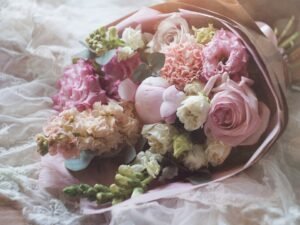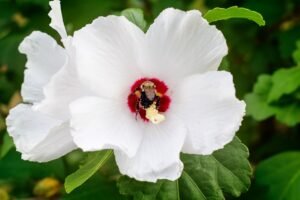Hawaii is known for its stunning natural beauty, and one of the most iconic aspects of this beauty is its vibrant and diverse array of flowers. Hawaiian flowers have gained popularity all over the world for their unique characteristics and stunning colors. From the delicate plumeria to the vibrant hibiscus, these flowers have become synonymous with the tropical paradise that is Hawaii.
Key Takeaways
- Hawaiian flowers hold great significance in Hawaiian culture
- Hawaii’s unique climate and environment make it a perfect place for growing a variety of flowers
- Popular Hawaiian flowers include the hibiscus, plumeria, and bird of paradise
- Hawaiian flowers are often used in landscaping, decoration, and traditional medicine
- Conservation efforts are necessary to protect Hawaiian flower species from threats and challenges.
The Significance of Flowers in Hawaiian Culture
Flowers hold a special place in Hawaiian culture and traditions. They are not just seen as beautiful decorations, but are deeply intertwined with the spiritual and cultural beliefs of the Hawaiian people. In ancient times, flowers were used to communicate messages and convey emotions. Different flowers were associated with different meanings, and they were often given as gifts to express love, gratitude, or condolences.
Flowers also played a significant role in religious ceremonies and rituals. They were used to adorn altars and sacred spaces, and were believed to have spiritual powers. The fragrant aroma of flowers was thought to attract the gods and bring blessings to the people. Even today, flowers are used in traditional Hawaiian ceremonies such as weddings, funerals, and hula performances.
The Unique Climate and Environment of Hawaii
Hawaii’s unique climate and environment make it an ideal place for flowers to thrive. The islands are located in the middle of the Pacific Ocean, which creates a mild tropical climate with warm temperatures year-round. The combination of abundant sunshine, regular rainfall, and fertile volcanic soil provides the perfect conditions for plants to grow.
The volcanic activity that formed the islands also contributes to the rich biodiversity of Hawaii’s flora. The lava flows created new land and allowed for the colonization of new plant species. As a result, Hawaii is home to a wide variety of native flowers that cannot be found anywhere else in the world.
The Most Popular Hawaiian Flowers and Their Characteristics
| Flower Name | Color | Size | Fragrance | Symbolism |
|---|---|---|---|---|
| Hibiscus | Red, pink, yellow, orange, white, purple | 2-6 inches | Mild to strong | Beauty, love, and delicate beauty |
| Plumeria | White, yellow, pink, red, orange | 2-4 inches | Sweet | Charm, grace, and new beginnings |
| Bird of Paradise | Orange, blue, white | 4-5 feet | None | Joyfulness, magnificence, and paradise on earth |
| Orchid | Purple, pink, white, yellow, green | 1-4 inches | Light | Refinement, luxury, and rare beauty |
There are several Hawaiian flowers that have gained popularity for their unique characteristics and beauty. One of the most well-known is the plumeria, which is often used in leis and has a sweet fragrance. The hibiscus is another iconic flower, with its large, colorful petals and trumpet-shaped blooms. Other popular Hawaiian flowers include the orchid, bird of paradise, and anthurium.
Each of these flowers has its own distinct characteristics. The plumeria, for example, comes in a variety of colors including white, yellow, pink, and red. It has a strong fragrance and its petals are often used to make essential oils and perfumes. The hibiscus, on the other hand, comes in a wide range of colors and sizes. It is known for its large, showy blooms and its ability to attract butterflies and hummingbirds.
The Symbolism and Meanings of Hawaiian Flowers
In Hawaiian culture, different flowers are associated with different meanings and symbolism. For example, the plumeria is often associated with beauty and charm. It is also seen as a symbol of new beginnings and transformation. The hibiscus, on the other hand, is often associated with love and passion. It is also seen as a symbol of hospitality and welcome.
The meanings of Hawaiian flowers can vary depending on their color as well. For example, a red hibiscus is often associated with love and desire, while a yellow hibiscus is associated with happiness and friendship. Understanding the symbolism and meanings behind Hawaiian flowers adds an extra layer of depth to their beauty.
The Role of Hawaiian Flowers in Landscaping and Decoration

Hawaiian flowers are not only used for their beauty and symbolism, but also play a significant role in landscaping and decoration. Their vibrant colors and unique shapes make them popular choices for gardens, parks, and public spaces. They can be used to create stunning displays and add a tropical touch to any landscape.
In addition to landscaping, Hawaiian flowers are also used in floral arrangements and decorations. They are often used in leis, which are traditional Hawaiian garlands made from flowers and leaves. Leis are given as gifts to welcome visitors, celebrate special occasions, or honor someone’s achievements. Hawaiian flowers are also used in weddings, parties, and other events to create a festive and tropical atmosphere.
The Use of Hawaiian Flowers in Traditional Medicine and Healing
Hawaiian flowers have long been used in traditional medicine and healing practices. The ancient Hawaiians believed that plants had spiritual powers and could be used to treat various ailments. Flowers were often used to make herbal remedies, teas, and ointments.
For example, the plumeria was believed to have healing properties and was used to treat skin conditions such as rashes and burns. The hibiscus was used to make a soothing tea that was believed to help with digestion and promote relaxation. Other flowers, such as the ginger lily and the tiare, were used for their anti-inflammatory and pain-relieving properties.
The Threats and Challenges to Hawaiian Flower Species
Despite their beauty and cultural significance, Hawaiian flower species face several threats and challenges. One of the biggest threats is habitat loss due to urbanization and agriculture. As more land is cleared for development or converted into farmland, the natural habitats of these flowers are being destroyed.
Invasive species are another major threat to Hawaiian flowers. Non-native plants and animals can outcompete native species for resources and disrupt the delicate balance of Hawaii’s ecosystems. Invasive plants can also hybridize with native species, leading to the loss of genetic diversity.
Climate change is also a significant threat to Hawaiian flowers. Rising temperatures, changing rainfall patterns, and increased frequency of extreme weather events can all have negative impacts on these delicate plants. Some species may not be able to adapt to these changes and could face extinction.
The Conservation and Preservation Efforts of Hawaiian Flowers
Efforts are being made to conserve and preserve Hawaiian flower species. Several organizations, such as the Hawaii Plant Extinction Prevention Program and the National Tropical Botanical Garden, are working to protect and restore native habitats. They are also conducting research to better understand the needs of these plants and develop strategies for their conservation.
In addition to conservation efforts, education and awareness campaigns are also important for the preservation of Hawaiian flowers. By raising awareness about the threats they face and the importance of their conservation, more people can become involved in protecting these unique and beautiful plants.
The Tourism Industry and Hawaiian Flowers: Opportunities and Challenges
The tourism industry in Hawaii presents both opportunities and challenges for Hawaiian flowers and their conservation efforts. On one hand, the tourism industry relies heavily on the beauty and allure of Hawaii’s natural landscapes, including its flowers. Visitors from all over the world come to Hawaii to experience its tropical beauty and immerse themselves in its unique culture.
However, the influx of tourists can also put additional pressure on the fragile ecosystems that support Hawaiian flowers. Increased foot traffic, trampling, and the introduction of non-native species can all have negative impacts on these delicate plants. It is important for the tourism industry to find a balance between promoting Hawaii’s natural beauty and preserving its fragile ecosystems.
In conclusion, Hawaiian flowers are not just beautiful decorations, but hold deep cultural significance in Hawaiian culture. They thrive in Hawaii’s unique climate and environment, and their vibrant colors and unique characteristics make them popular choices for landscaping, decoration, and traditional medicine. However, these flowers face threats from habitat loss, invasive species, and climate change. Efforts are being made to conserve and preserve these unique species, but it is important for everyone to play a role in their protection.
If you’re a fan of Hawaiian flowers, you’ll love this article on Just Tidings about the stunning beauty and symbolism behind these tropical blooms. From the vibrant plumeria to the elegant orchids, Hawaiian flowers have captivated people around the world for centuries. Discover their rich cultural significance and learn how to incorporate them into your own floral arrangements. Check out the article here to immerse yourself in the enchanting world of Hawaiian flora.




















+ There are no comments
Add yours